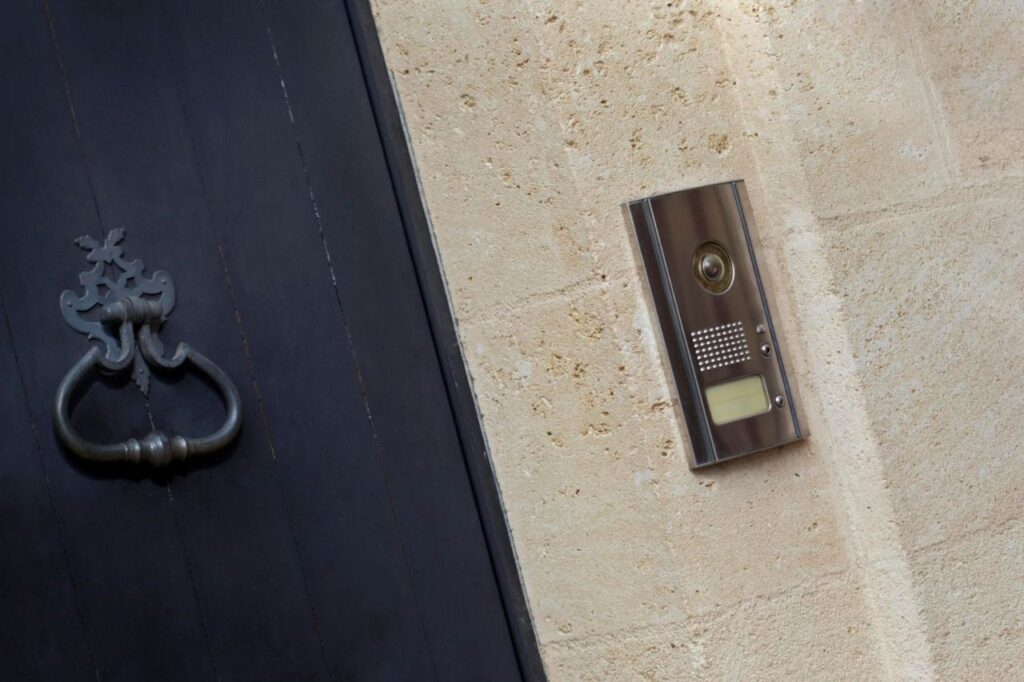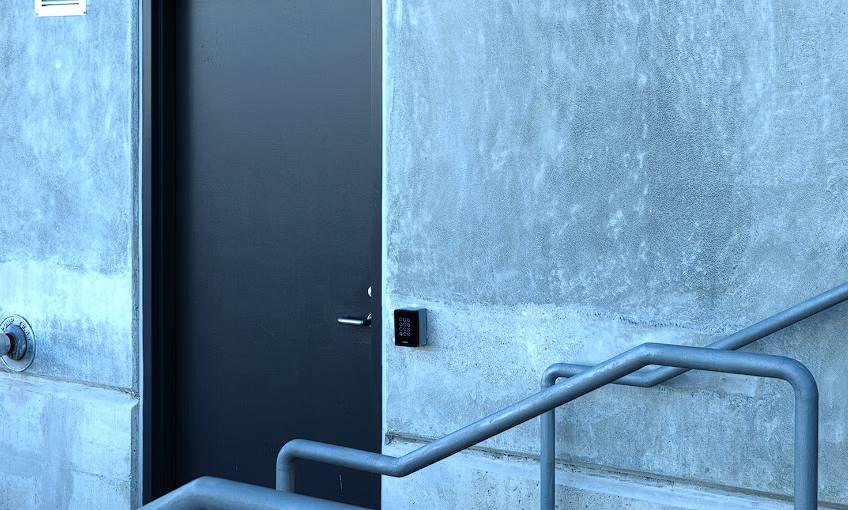There are a lot of entrances in your building that need to be secured, including garages, storage closets, and common areas. Keeping track of who has access to what areas and when may be a major hassle. One option is to install a keypad security system.
In order to enter a building or a specific room, a keypad is used to enter a personal identification number. Keypads are a convenient option for restricting access to and within a structure. Keep reading to learn everything you need about keypad access control and which keypad would be ideal for your home or office.
What Exactly Is Keypad Access Control?
A keypad is a form of keyless access control that can be used to restrict access to a building or certain areas inside it. To get access, authorised users type a numeric PIN code into a keypad that has numbered buttons or a touchscreen interface with numbers. You can keep the doors and gates secured with the help of keypad entry systems and only let in authorised tenants and visitors.
A keypad can function independently as an access control system for a single door or be integrated with other systems. Keypads at service entrances, for instance, could be linked to an entrance video intercom system. This allows residents to use the same PIN for entry to both zones.
Where Should Keypads Be Installed?
Access control keypads are a convenient way to monitor who enters and leaves various buildings and rooms. Due to their compact size, they can be used at a wide variety of entrances. Keypads are convenient because they require nothing in the way of wiring and are cheap to put in.
Keypad Door Locks
Two basic types of keypad access control exist: freestanding devices and door locks.
Installing a standalone keypad device close to a door is a convenient way to add an extra layer of security. They must be wired separately into a power source and door release mechanism.
In contrast, a keypad door lock incorporates the keypad itself into the lock mechanism. Since batteries power the vast majority of keypad locks, regular battery replacement is required.
The doors of apartments, to which only a select few people need the key, typically use keypad locks. Keypads that are freestanding are preferable in public areas like apartment common areas and workplaces.
Keypads for Gates
Keypads can be used on exterior doors as well. Keypads are not the only option for gate access.
Keypads installed at gated entries allow for more precise vehicle and pedestrian access management. They simplify the process of gaining entry to rental houses that have been securely locked. You might want to install an access control system with keypads at the gates if you have a gated community or business park.
Keep in mind that keypads work best at gates where only authorised tenants are allowed to enter. You should install a gate intercom if lots of people need to utilise the front door.
How Does a Keypad Function?
Instead of physically inserting a key, occupants of buildings using keypad entry systems enter a code. The lock on the door will unlock and allow admission only if the correct code has been entered.
All keypads need some power supply. It may also necessitate an active internet connection, depending on the keypad you use.
The property management team uses a web-based interface to programme the keypad. Staff can manage the tenant directory, issue new PINs, and make other security changes from one central location. A cloud-based keypad eliminates the need for personnel to physically update the device or install software on their local machine in order to programme it remotely.
Benefits of Keypad Locks
This keyless lock has many advantages over traditional locking methods.
Quick and Easy Keyless Entry
The greatest perk is how easy it is to use. It's a great alternative to using keys. There is no need to make extra copies or constantly rekey doors after losing a key. Instead of giving children, guests, and service providers a key, they can be given a code instead.
Higher Security
Hardware-wise, keypad locks diverge from conventional locks in a significant way. They lack cylinder mechanics, making picking and bumping them much more difficult. This improves the safety of the structure.
It's preferable to avoid losing keys altogether to avoid having to rekey or replace the lock. A keypad system makes it simple to modify the security PIN as needed.
Enhanced Durability
As time passes, turning and operating conventional keys and locks becomes increasingly difficult. Keypads are sturdier than regular locks. Standard hardware should increase the lifespan of a high-quality lock and keypad system.
Easy Installation
Many homeowners worry that installing a keypad lock will necessitate extensive carpentry work on the door or frame. The opposite is true. Keypad locks can be put on conventional doors with the same ease as any other lock. There are keypad locks that don't need to be plugged into an electrical outlet, such as mechanical models or those that run on batteries.
Access Control System Integration
An access control system may include a keypad system. Even with the correct code, businesses can block access during particular times of day or night. A keypad entry system can also be installed internally by businesses. Because of this, several areas of the building are off-limits. It's helpful for employers who need to restrict workers' movement throughout the office on certain days or hours.

Keypads in Comparison To Other Types of Access Control Systems
A door or gate can be secured in a variety of ways. Many types of access control systems are available, not only keypads.
RFID Access Control
Access control systems use radio-frequency identification (RFID) to scan IDs and let people in.
Users present their key card or fob to the RFID access control reader instead of entering a PIN code. The door unlocks after the scanner scans the fob.
Because tenants aren't required to carry a card or fob with them at all times, keypads are more practical than RFID access control systems. A keypad-controlled room eliminates the need for residents to carry fobs or keys, both prone to loss or forgetfulness.
However, some RFID keypads and card keypads provide standard PIN code access in addition to card/fob access.
Mobile Access Control Systems
To gain entry, users of mobile access control systems can present their smartphones. WiFi, Bluetooth, and NFC are the backbone technologies for most of these systems.
Some keypads also allow renters to unlock the door with their smartphones; therefore, they might be considered a sort of mobile access control. You can either swipe your phone to unlock the door or enter a PIN number into one of these keypads that is based on a smartphone. Hands-free access is possible with keypads that pair with a mobile app.
Cloud-based Access Control Systems
An access control system that uses the cloud as its data storage rather than a local server is said to be cloud-based. A cloud-based access control system allows for managing and controlling doors and gates from any internet-enabled device.
Cloud-based keypads are an option. With cloud-based door access keypads, building owners and managers can easily add and remove tenants and control who has access to certain areas of the building. This allows you to control the complete setup from afar.
You can't update the system or manage access via a web browser or app if your keypad isn't cloud-based. Non-cloud keypads require local management via a USB dongle or PC software.
How to Select an Access Control Keypad System
A trustworthy, long-lasting device with security and convenience-enhancing capabilities is what you should look for if you're considering keypad entry control for your home or business.
Visitor Access Solution
Only authorised tenants and employees can use most keypads. However, it is common for renters' guests also to require access to the building or room. For this reason, searching for a keypad that also serves as a visitor access system is advisable.
Using a keypad with a virtual key system makes it simple to control who has access to a building. Virtual keys allow homeowners to pre-issue specific codes to guests. A virtual key's entry code is entered into a keypad when the visitor arrives at the entrance.
Other System Integrations
The fact that your building's various electronic systems can communicate with one another is probably the best benefit of investing in proptech. Integrations across different proptech solutions reduce wasted effort and costs. So, go with a keypad that works with your existing smart locks and property management software.
If you use property management software, you may integrate your keypad with it to share data between the two systems. That implies the keypad system will reflect any changes made to the rent roll in your property management system. That means less time spent on boring chores.
Ensure that your keypad works with the smart locks on the apartment doors. Residents can use the same app to gain access to both common areas and their individual apartments by connecting the keypad to the apartment's smart locks. You'll save tenants the trouble of using a variety of apps to get around the structure.
Mobile App
Tenants can unlock doors and gates using their smartphones using a mobile app connected to keypads. Users can unlock the door with a swipe of their finger or by inputting a PIN number on their mobile device.
Adding smartphone-based keypads to all of the units in your building provides residents with unparalleled ease of use and enhances the overall quality of life in your building. Your tenants will have easy access and simple navigation throughout the building. They can even unlock doors with keypads from afar for visitors.
Cloud-based
Select a keypad that runs on cloud-based software. Tenant directory changes and authorisation administration can be handled remotely via this method. Access a web-based dashboard from any device with an internet connection to control the system.
Compared to keeping a server on-site, installing and maintaining a cloud-based access control system costs far lower.
Which Is the Best Access Control Door Entry Method?
There is a time and a place for keycards, smart keyless locks, smartphone apps, and biometrics. For example, we discussed how biometrics could be out of reach financially for some organisations because the benefits of using such technology don't justify the high upfront costs. Passcode locks and similar stand-alone keyless entry techniques may not be secure enough for some businesses.
Most businesses today employ a door entry system combining elements of the traditional intercom and the more flexible biometric reader. Maintaining maximum security while minimising blind spots and vulnerabilities can be accomplished by a combination of one of the aforementioned door entry systems, video surveillance, and remote monitoring.
Conclusion
One method of controlling who enters a building or which parts of it can be locked down is through the use of keypads. Keypads are practical because of their low cost and lack of wire requirements for installation. Keypad door locks and freestanding keypad devices are the two most common forms of this type of access control.
It is more typical to see freestanding keypads in public spaces like apartment lobbies and offices, while keypads for gates are more frequent in private residences. Keypads are convenient because they make it easier to enter locked rental homes and allow for more accurate regulation of vehicle and pedestrian access compared to previous locking techniques.
The property management staff programs the keypad via a web-based interface, which requires both a power source and an active internet connection. Keyless entry, improved security, longer life, and simple installation are just a few of the many benefits of keypad locks over more conventional locking mechanisms.
Keypads are more secure than regular locks, and the security PIN can be changed whenever it's necessary. Keypad locks are as simple to install as any other lock on a standard door and can be linked to an electronic security system for additional security. There are a wide variety of access control solutions on the market today, from RFID to mobile to cloud to traditional keypads.
Doors and gates can be unlocked with the touch of a finger or by entering a PIN into a mobile app. Cloud-based access control systems are more economical, and keypads based on smartphones make life easier for residents in terms of access and navigation. The most secure means of gaining entry to a building is through the use of a combination of keycards, smart keyless locks, smartphone apps, and biometrics.
There is a time and a place for keycards, smart keyless locks, smartphone apps, and biometrics. For example, we discussed how biometrics could be out of reach financially for some organisations because the benefits of using such technology don't justify the high upfront costs. Passcode locks and similar stand-alone keyless entry techniques may not be secure enough for some businesses.
Most businesses today employ a door entry system combining elements of the traditional intercom and the more flexible biometric reader. Maintaining maximum security while minimising blind spots and vulnerabilities can be accomplished by a combination of one of the aforementioned door entry systems, video surveillance, and remote monitoring.

Content Summary
- Keypads are a convenient option for restricting access to and within a structure.
- Keep reading to learn everything you need about keypad access control and which keypad would be ideal for your home or office.
- Keypads can be used on exterior doors as well.
- Keypads are not the only option for gate access.
- Keypads installed at gated entries allow for more precise vehicle and pedestrian access management.
- You might want to install an access control system with keypads at the gates if you have a gated community or business park.
- Instead of physically inserting a key, occupants of buildings using keypad entry systems enter a code.
- The lock on the door will unlock and allow admission only if the correct code has been entered.
- All keypads need some power supply.
- The property management team uses a web-based interface to programme the keypad.
- This keyless lock has many advantages over traditional locking methods.
- The greatest perk is how easy it is to use.
- An access control system may include a keypad system.
- A keypad entry system can also be installed internally by businesses.
- A door or gate can be secured in a variety of ways.
- Many types of access control systems are available, not only keypads.
- Users present their key card or fob to the RFID access control reader instead of entering a PIN code.
- However, some RFID keypads and card keypads provide standard PIN code access in addition to card/fob access.
- To gain entry, users of mobile access control systems can present their smartphones.
- Some keypads also allow renters to unlock the door with their smartphones; therefore, they might be considered a sort of mobile access control.
- You can either swipe your phone to unlock the door or enter a PIN number into one of these keypads that is based on a smartphone.
- With cloud-based door access keypads, building owners and managers can easily add and remove tenants and control who has access to certain areas of the building.
- You can't update the system or manage access via a web browser or app if your keypad isn't cloud-based.
- A trustworthy, long-lasting device with security and convenience-enhancing capabilities is what you should look for if you're considering keypad entry control for your home or business.
- For this reason, searching for a keypad that also serves as a visitor access system is advisable.
- Using a keypad with a virtual key system makes it simple to control who has access to a building.
- A virtual key's entry code is entered into a keypad when the visitor arrives at the entrance.
- So, go with a keypad that works with your existing smart locks and property management software.
- If you use property management software, you may integrate your keypad with it to share data between the two systems.
- Ensure that your keypad works with the smart locks on the apartment doors.
- Adding smartphone-based keypads to all of the units in your building provides residents with unparalleled ease of use and enhances the overall quality of life in your building.
- Select a keypad that runs on cloud-based software.
- Access a web-based dashboard from any device with an internet connection to control the system.
- Compared to keeping a server on-site, installing and maintaining a cloud-based access control system costs far lower.
- There is a time and a place for keycards, smart keyless locks, smartphone apps, and biometrics.
- Passcode locks and similar stand-alone keyless entry techniques may not be secure enough for some businesses.
- Most businesses today employ a door entry system combining elements of the traditional intercom and the more flexible biometric reader.
- Maintaining maximum security while minimising blind spots and vulnerabilities can be accomplished by a combination of one of the aforementioned door entry systems, video surveillance, and remote monitoring.
Frequently Asked Questions
Brute-force assaults, guessing passwords and software/hardware flaws are just a few ways that access keypads might be compromised.
Multi-factor authentication, routinely changing access codes, monitoring access logs, and employee security awareness training are all good practices for bolstering building access keypads' safety.
It is possible to increase the security of a facility by integrating access keypads with other security measures, such as surveillance cameras, alarms, and biometric scanners.
Keypad malfunction, employee carelessness, and the price of adopting and maintaining secure access keypad systems are all potential problems that may arise when employing access keypads.





